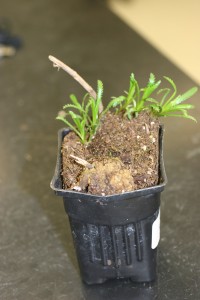Crown gall – Agrobacterium tumefaciens
Pathogen: Agrobacterium tumefaciens
Hosts Include: Achillea, Anemone, Artemisia, Aster, Campanula, Coreopsis, Delphinium, Dianthus, Gaillardia, Geranium, Gypsophilia, Helianthus, Heuchera, Lathyrus, Nepeta, Oenothera, Penstemon, Phlox, Platycodon, Primula, Rudbeckia, Salvia, Scabiosa, Sedum, and Stachys.
Symptoms: Galls form on stems and roots, restricting shoot or root growth.
Spread: This bacterium persists in soil; use of infested field soil can spread the disease. Movement of infested plants also spreads disease. Cuttings taken from infected plants are likely to become infected.
Management: Plants with galls should be removed and destroyed; they can not be successfully treated.
Infection usually occurs through wounds. Good sanitation is important during vegetative propagation. Effective biological control products are available and can be used to protect especially susceptible plants.

Other Documents in this Series
You Might Also Be Interested In
-
Agriculture’s role in protecting Lake Erie
Published on April 1, 2015
-
Celebrating 100 years of Michigan State University Extension in Alcona County
Published on October 19, 2017
-
Protecting Michigan’s environment and wildlife through the Conservation Reserve Enhancement Program
Published on September 1, 2021
-
Protecting Michigan’s water resources
Published on March 16, 2013
-
Controlling soil erosion with cover crops
Published on April 1, 2015
-
What’s that pipe in my backyard?
Published on December 27, 2013
Accessibility Questions:
For questions about accessibility and/or if you need additional accommodations for a specific document, please send an email to ANR Communications & Marketing at anrcommunications@anr.msu.edu.



 Print
Print Email
Email


